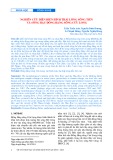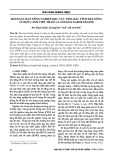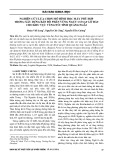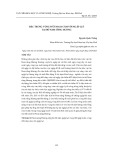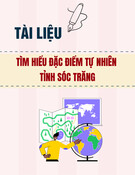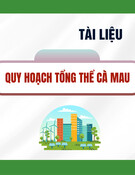
Journal of Science and Transport Technology Vol. 4 No. 1, 23-41
Journal of Science and Transport Technology
Journal homepage: https://jstt.vn/index.php/en
JSTT 2024, 4 (1), 23-41
Published online 30/03/2024
Article info
Type of article:
Original research paper
DOI:
https://doi.org/10.58845/jstt.utt.2
024.en.4.1.23-41
*Corresponding author:
E-mail address:
damnd@utt.edu.vn
Received: 27/02/2024
Revised: 28/03/2024
Accepted: 29/03/2024
Landslide Susceptibility Zoning: Integrating
Multiple Intelligent Models with SHAP
Analysis
Indra Prakash1, Dam Duc Nguyen2*, Nguyen Thanh Tuan2, Tran Van Phong3,
Le Van Hiep2
1DDG(R) Geological Survey of India, Gandhinagar, Gujarat, 382010, India
2Department of Geotechnical Engineering, University of Transport Technology,
54 Trieu Khuc, Thanh Xuan, Ha Noi, Viet Nam
3Institute of Geological Sciences, Vietnam Academy of Science and
Technology, 84 Chua Lang Street, Dong Da, Ha Noi, 100000, Viet Nam
Abstract: In this study, we aim to delineate landslide susceptibility zones within
Dien Bien province, Vietnam, leveraging the capabilities of various machine
learning models including Light Gradient Boosting Machine (LGBM), K-Nearest
Neighbors (KNN), and Gradient Boosting (GB). Harnessing a dataset
comprising 665 data points and encompassing 14 influential factors such as
slope, aspect, curvature, elevation, geological composition, Normalized
Difference Vegetation Index (NDVI), and proximity to geological features like
faults, rivers, and roads, a comprehensive database for landslide modeling was
constructed. The analysis entailed rigorous evaluation and comparison of
model accuracy employing established statistical metrics, notably Receiver
Operating Characteristic (ROC) curves and Area Under the Curve (AUC).
The findings underscore the efficacy of the Light Gradient Boosting Machine
model, exhibiting superior performance with an AUC score of 0.85, surpassing
both the Gradient Boosting model (AUC = 0.81) and the K-Nearest Neighbors
model (AUC = 0.79). Notably, the Light Gradient Boosting Machine model
emerges as a promising tool for precise landslide prediction within the study
area, offering significant potential for the creation of a robust landslide
susceptibility map. The resulting spatial forecast map for Dien Bien province
holds considerable utility for informing land use planning initiatives aimed at
mitigating the impact of landslide disasters in the region.
Moreover, the application of SHAP (Shapley Additive explanation) values to
quantify the contribution of each factor to landslide susceptibility prediction,
offering novel insights into model interpretation and feature importance. The
resulting spatial forecast map holds significant implications for land use
planning and disaster mitigation efforts in Dien Bien province, showcasing the
potential of advanced machine learning techniques in enhancing landslide risk
management strategies.
Key words: LGBM, GB, KNN; GIS; Landslide; Dien Bien, Viet Nam.
1. Introduction
Landslides pose significant threats as natural
disasters, particularly in mountainous regions [1],
where their occurrence can result in substantial
damage to both natural landscapes and built
environments, often leading to loss of life and






